How to Focus Binoculars: Beginner’s Guide (Calibrate Using the Diopter)
Last Updated on
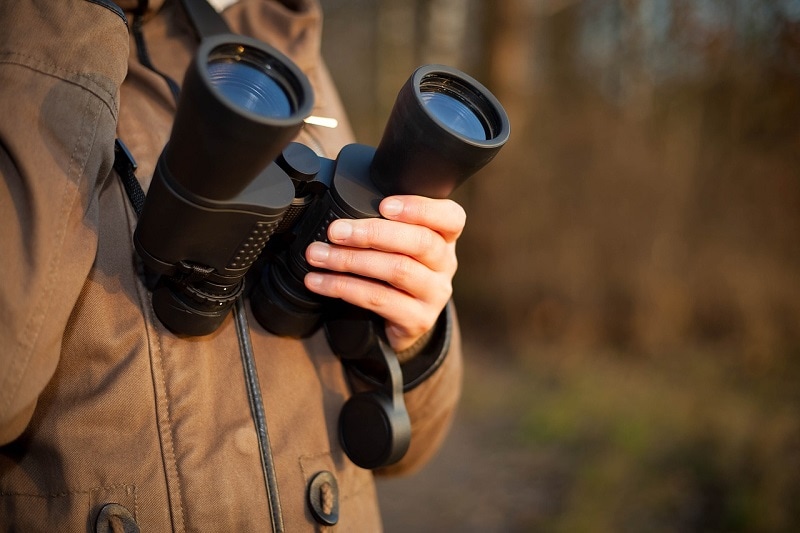
Using a pair of binoculars to view a distant object always feels natural, as opposed to using a telescope or any other type of optical device. And quite frankly, we think that’s partly because you don’t have to squint through an eye, so as to clearly see an image.
We’re happy you decided to work with a pair of binos, instead of wasting your time trying to learn the ins and outs of the other optical equipment. All you now have to do is learn how to focus it.

How to Calibrate Your Binoculars: Diopter Adjustment
Your binoculars will only give you a clear and detailed image, if the settings of its center focus wheel and the diopter are right. Of course, they all come in different models, but that’s no excuse for not being able to grasp the basic focusing techniques. So, let’s go over them:
1. Look for the Diopter Ring
The diopter ring—also referred to an adjuster knob in some circles—will most likely be located in the right eyepiece. But if you can’t see anything that resembles a knob there, try the left barrel’s eyepiece. You can use an instruction manual if you still have no clue of what we’re referring to.
2. Reset the Diopter to Zero
Trying to find the right diopter adjustment from the middle is almost like trying to use a different person’s calculation. You’ll only get more confused. So, do yourself a favor and reset it to zero. We’ll work our way up from there.
3. Find Something to Cover or Close the Left/Right Barrel
Your eyes don’t have equal or balanced acuity—the ability to see the finer details of an object in front of you. In other words, one eye is always stronger than the other.
Assuming both eyes are open while you’re trying to focus one barrel, your brain will keep on trying to reconcile that difference. Subsequently, making it twice as hard to figure out which diopter adjustment is the appropriate setting for the left or right eye.
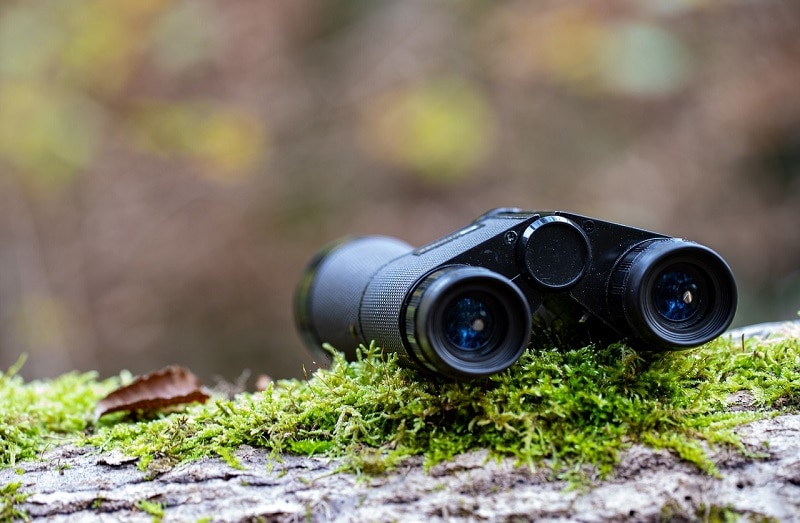
Squinting is not an option, by the way. You’ll just end up changing the general shape of the eyeball, and once that happens, your focus will be compromised.
4. Adjust the Focus Wheel
Now that we’ve determined the right diopter setting for the left/right eye, hold up the binoculars and try to focus on any distant object. If the image is still kind of blurry, adjust the center focus wheel. Also, make sure the light is adequate, and your target isn’t moving. You’ll know you’ve gotten the right focus when the image appears clean and crisp.
5. Uncover the Left/Right Barrel
We have to repeat that same process, but with the other barrel. So just uncover it, and cover the one that we’re done adjusting.
Friendly reminder: Don’t try squinting.
6. Uncover Both Barrels
It’s finally time to check the overall focus of your binoculars. At this point, you’re completely done with the diopter adjuster knob. If you feel the need to make a few more adjustments, only use the center wheel of focus. It will get the job done.
To ensure our binoculars are well adjusted, we’ll have to view an object under different lighting situations and distance. These two factors will always influence the clarity of an image.
7. Lock the Diopter Knob
Since the device is properly aligned, locking that knob is the only way to make sure that you don’t inadvertently tamper with its settings. Some binoculars have a locking mechanism, while others don’t. If it lacks one, leave a visible mark on the optimal position using a permanent marker.
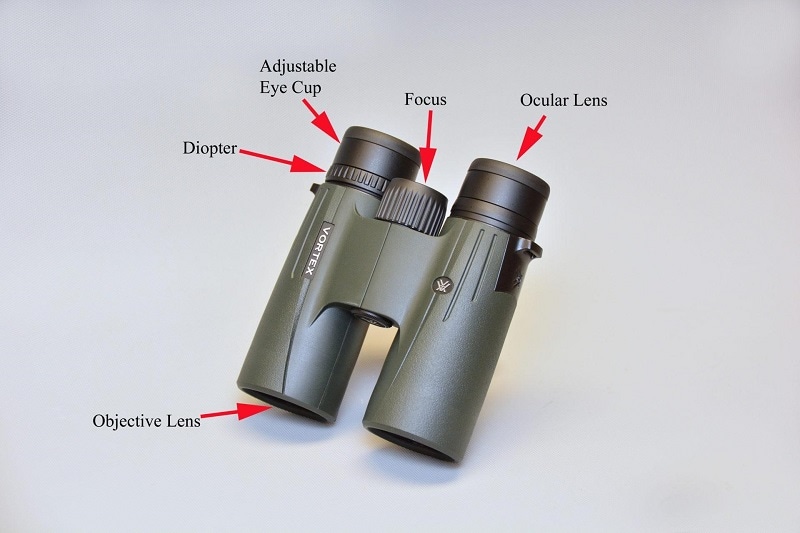
Understanding the Optic’s Specifications
Understand these two measurements before choosing binoculars: The field of view and the close focus. Most users are usually more concerned about the size of the objective lens and the magnification power, forgetting the fact that they wouldn’t be able to see more of the world without an incredible close focus or wider field of view.
Field of View (FOV)
It’s the one factor that influences the width of your object’s image. Birdwatchers will tell you this is something that really matters to them because a wider FOV makes it easier to follow birds as they move, search for them in dense foliage, and scan the sky. You’ll also have more than enough room for error, and the birds often stay within range. Hence, giving you more time to make observations or study it.
Regrettably, just like any other optical device, your binoculars’ FOV will drastically decrease should you decide to increase your magnification power. Come to think of it, this could be the reason why you find birders stick to magnifications that are 8x or less.
Optical experts do recommend a FOV of 1,000 yards. And to put that into perspective, it means your image will appear 12 to 30 inches wide, if the object is 15 feet away.
Close Focus
The binoculars’ close focus is not the same as its general focus. It’s the distance between your binnos, and the nearest object that it can properly focus on. Typically, optical devices that have a larger aperture and higher magnification have a closer focus. And yes, it’s an important factor if you’ll be using the unit to view details of objects close to you.
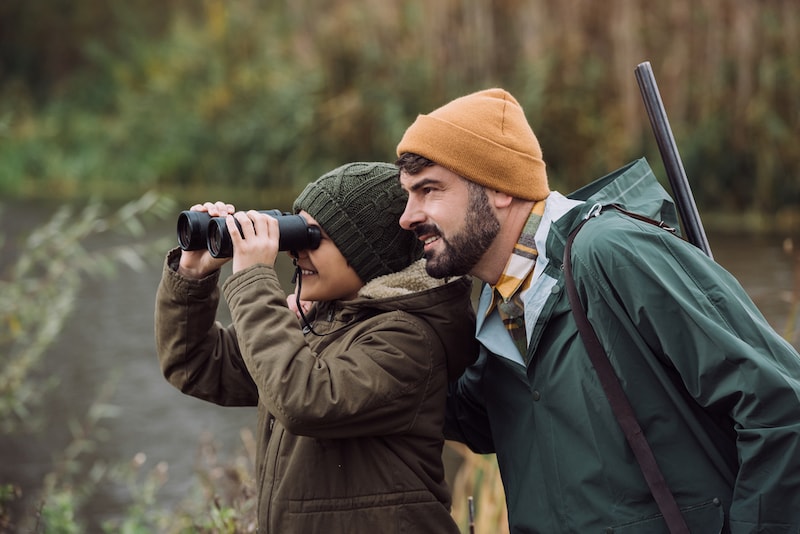

Frequently Asked Questions
Should you wear glasses while using binoculars?
Depends. If the pair of binoculars that you’re using has eyecups, you’ll have to either remove your glasses, or remove the eyecups. Using the both of them will allow peripheral light, thus affecting the clarity of the images. Look for a pair of binos with good eye relief.
Do all binoculars come with an adjustment diopter?
Different models have different features and specifications. The diopter is a feature that’s present in some binoculars but absent in others. So, before you invest in one, do your due diligence. We would advise you to only buy from top brands because most generic products lack this feature.
What’s the diopter adjustment knob?
It’s the knob that will help you compensate for the difference in your eyes. It fine-tunes the focus and ensures you see clear and crisp images.
Does diopter affect focus?
No, it only helps the user see the finer details of the object being viewed. In other words, it adjusts the clarity of the image.
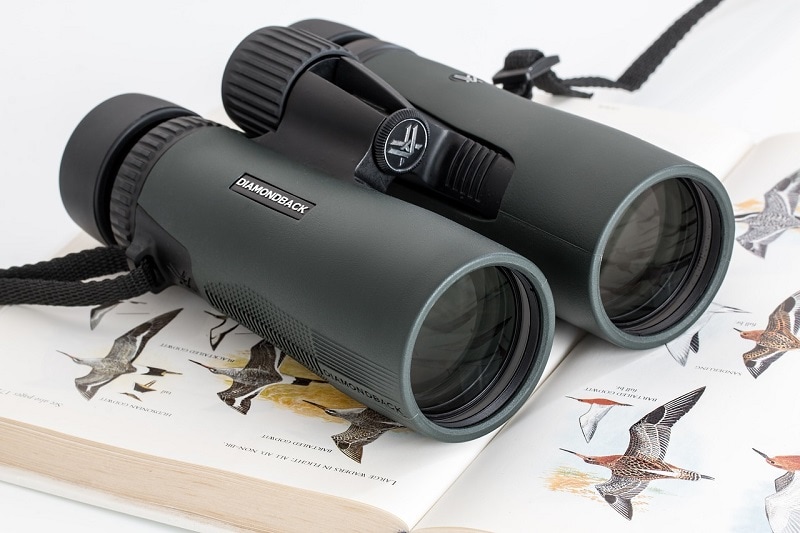
In Conclusion
Before signing off, this is what we’d like you to know: some binoculars have a permanent focus system. The kind that you only have to focus once and that’s it. If you’re not into calibrating binoculars every time you go out, you could invest in one of those.
Featured Image: Khaligo, Pixabay
About the Author Robert Sparks
Robert’s obsession with all things optical started early in life, when his optician father would bring home prototypes for Robert to play with. Nowadays, Robert is dedicated to helping others find the right optics for their needs. His hobbies include astronomy, astrophysics, and model building. Originally from Newark, NJ, he resides in Santa Fe, New Mexico, where the nighttime skies are filled with glittering stars.
Related Articles:
How to Collimate Binoculars: 9 Expert Tips
How to Clean a Refractor Telescope: Step-by-Step Guide
How to Clean a Telescope Eyepiece: Step-by-Step Guide
How to Clean a Rifle Scope: 8 Expert Tips
Monocular vs Telescope: Differences Explained (With Pictures)
What Is a Monocular Used For? 8 Common Functions
How to Clean a Telescope Mirror: 8 Expert Tips
Brightfield vs Phase Contrast Microscopy: The Differences Explained


